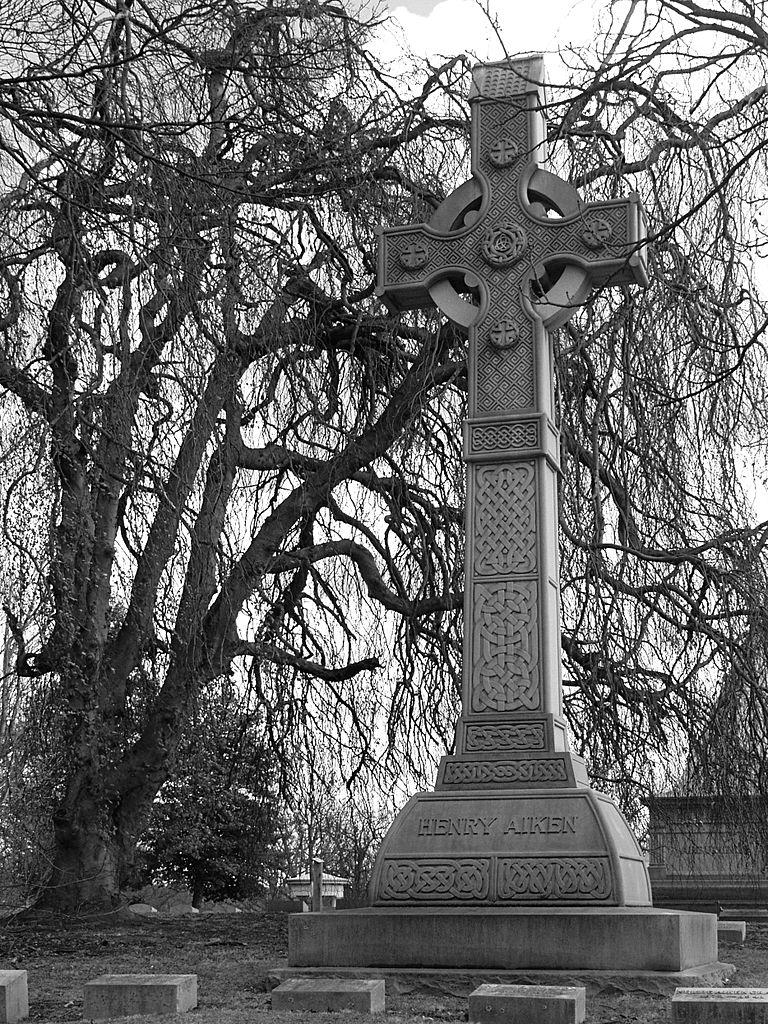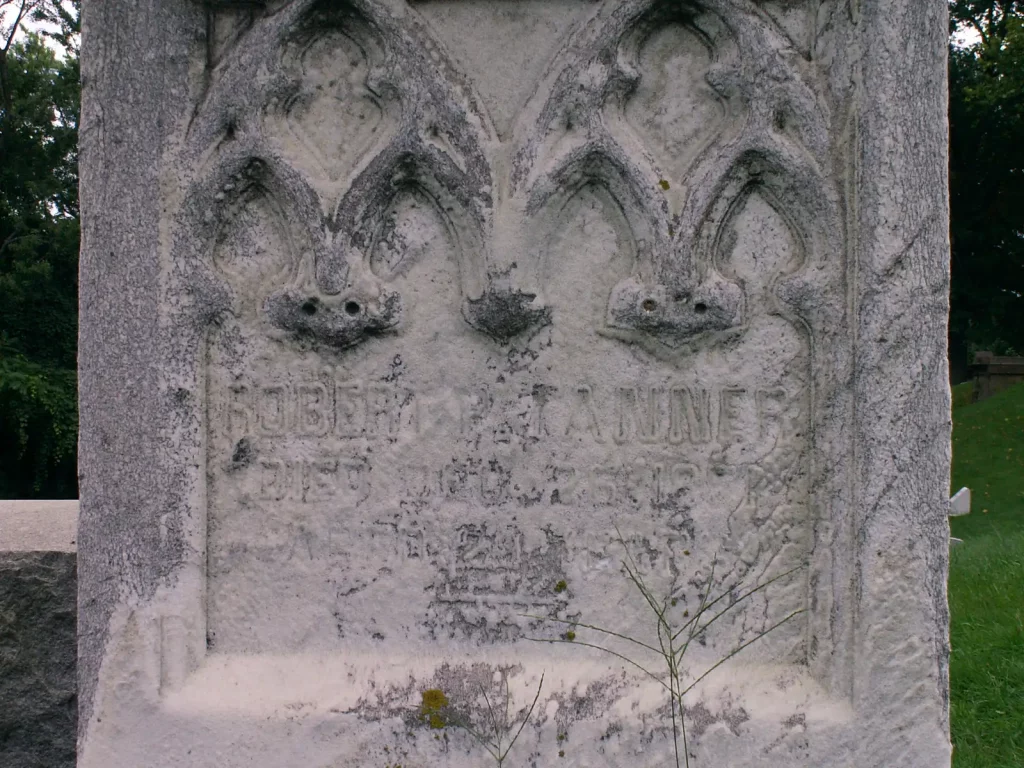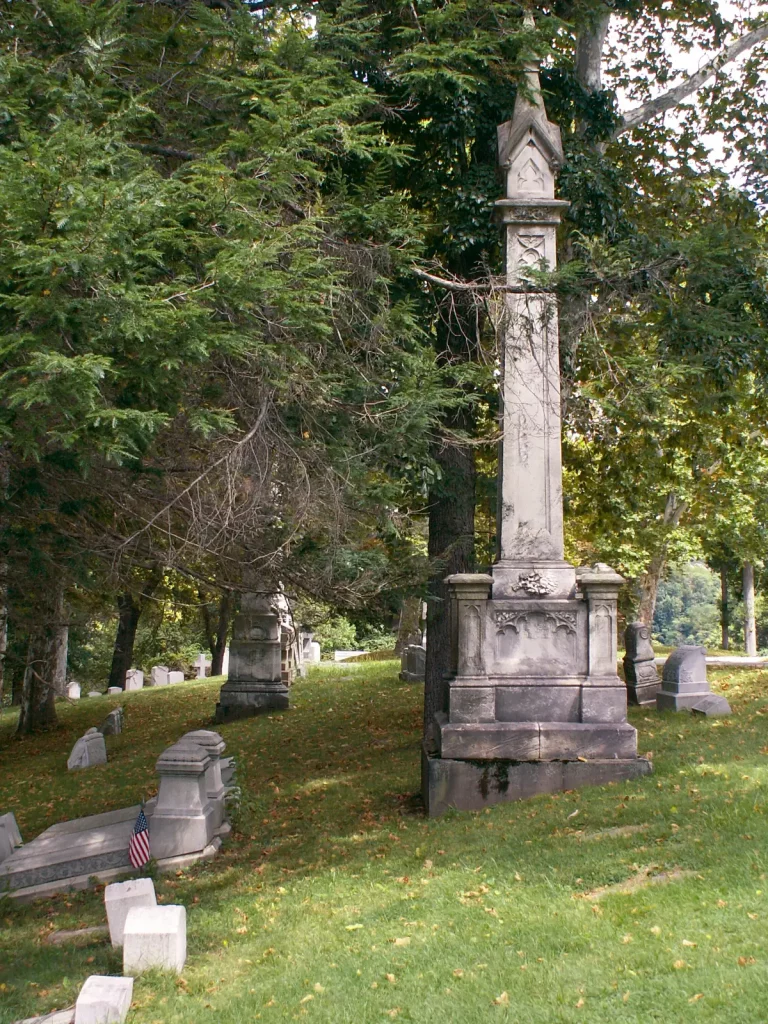
A tall and splendid Celtic cross, usually the mark of someone of Irish heritage. There is an Aiken Avenue not far from the Homewood Cemetery.


The eroded inscription is clear enough to read that Mr. Tanner died in 1851, and we have seen similar exuberantly spiky Gothic monuments from about that time. Mr. Tanner married a Patterson, and Pattersons make up most of the residents in the family plot.


This Gothic shaft no longer bears any legible inscriptions except the name McKee in a shield halfway up the shaft and, added later, the name Dravo on the base. For genealogical purposes it is a disappointment, but as a picturesque accessory in the landscape it is probably even more delightful in its worn state than it was when it was new. It was probably put up in the 1870s; the plot owner was one Samuel McKee.



One is tempted to describe this peculiar construction as “Doric Romanesque.” The rusticated stone and ponderous style cry out for Romanesque details, but instead we get smooth Doric columns and a smooth arch that seems to belong to another structure altogether. In fact, Father Pitt, who seldom passes a negative judgment on anyone’s mausoleum, is compelled by sheer honesty to say that he does not regard this design as a success. It is a cacophony rather than a harmony of disparate ideas. The bronze doors, however, are splendid, and no one can take that away from them.


